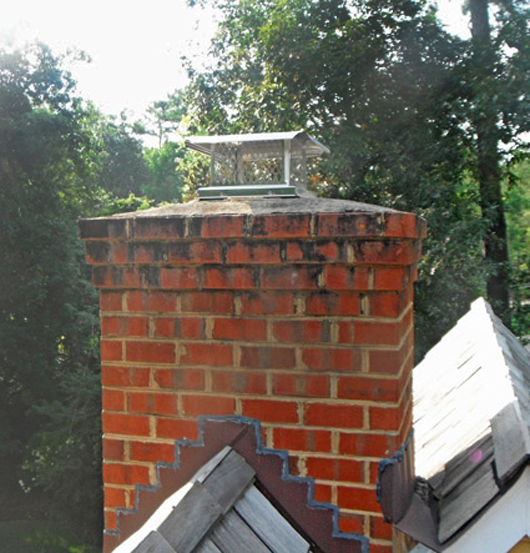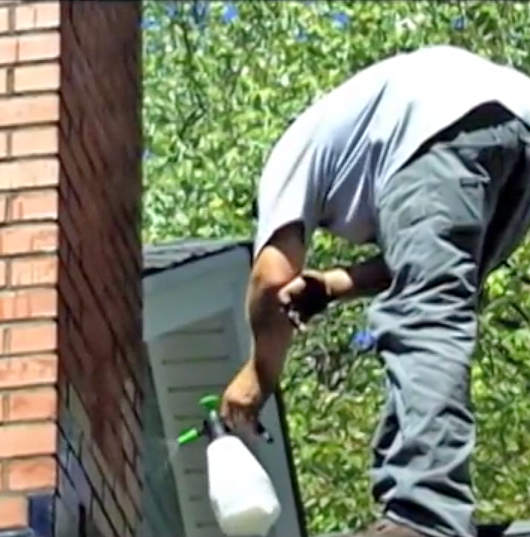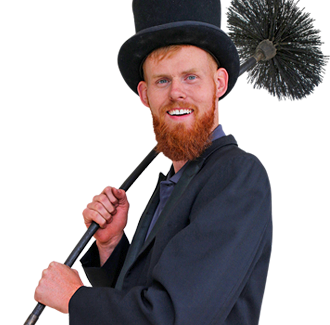Preventing Moisture in Chimneys & Fireplaces
 Cozy fires in a fireplace make a family feel protected against the elements. It’s important to remember that the chimney could use its own protection against its worst enemy: moisture. Water can get into the chimney system in a variety of ways, and the damage it causes can be extensive. Chimney leaks are not usually obvious right away, but there are signs to look for that indicate moisture has begun to cause deterioration. Preventative measures and keeping a lookout for signs of moisture damage can help to keep a fireplace in operation winter after winter, with no interruptions for major repairs.
Cozy fires in a fireplace make a family feel protected against the elements. It’s important to remember that the chimney could use its own protection against its worst enemy: moisture. Water can get into the chimney system in a variety of ways, and the damage it causes can be extensive. Chimney leaks are not usually obvious right away, but there are signs to look for that indicate moisture has begun to cause deterioration. Preventative measures and keeping a lookout for signs of moisture damage can help to keep a fireplace in operation winter after winter, with no interruptions for major repairs.
How Moisture Gets into a Chimney
A chimney cap can prevent rain, sleet, and snow from falling into a chimney, and yet the chimney is still vulnerable to water. Chimney masonry can usually last a century or more, unless water intrusion shortens the masonry’s lifespan. The following are some of the ways water gets into a chimney system and causes damage:
- The chimney crown at the top of the chimney is built for the purpose of preventing water from pouring down into the chimney between the flue and the exterior chimney wall. In addition, the crown acts as an umbrella, to keep water from flowing down the walls of the chimney on rainy days. Over time, chimney crowns crack, allowing moisture inside.
- The mortar that holds masonry together only lasts about 25 years, at most. Eventually, the mortar begins to crack and peel off. If the mortar isn’t replaced, moisture gets into the masonry and causes deterioration.
- The chimney flashing is the metal portion of the chimney. The purpose of flashing is to seal the gap between the roof and the chimney. Flashing is difficult to install correctly, and the waterproof seal created during installation can quickly fail. In addition, the metal tends to rust, allowing a chimney leak that can do great damage to the roof, ceilings in the home, the masonry, and more.
How to Spot a Chimney Leak
Checking the attic area around the fireplace is a good way to potentially discover signs of water damage from a chimney leak. The best route is probably to schedule a chimney inspection, during which chimney experts look for any signs of moisture damage. Because of their training and experience, certified technicians can see evidence of damage a layperson usually wouldn’t recognize. The following are obvious signs that homeowners can look for, to determine if moisture has gotten into the chimney, possibly causing damage already:
- If you smell a musty odor.
- You can see moist areas or water stains inside the chimney or firebox.
- An audible dripping sound can be heard in the chimney, even if you don’t see any water.
- The chimney on the roof exterior has white stains, which is called efflorescence.
- Spalling has occurred, which means broken pieces of brick off of the chimney fall on the roof or all the way to the ground.
- You see cracks in the exterior or interior masonry.
 Protection from Chimney Water Damage
Protection from Chimney Water Damage
The chimney experts at Hudson Valley Chimney can provide protective waterproofing, to extend the life of your chimney. It’s important to get waterproofing done before moisture damage has occurred. Otherwise, repairs and possible teardown and rebuild of the chimney will be required before waterproofing the rebuilt structure, to help protect it from further damage. Contact Hudson Valley Chimney today at 800-439-1071 to schedule waterproofing, a chimney inspection, or any of your other needs related to chimney services.








